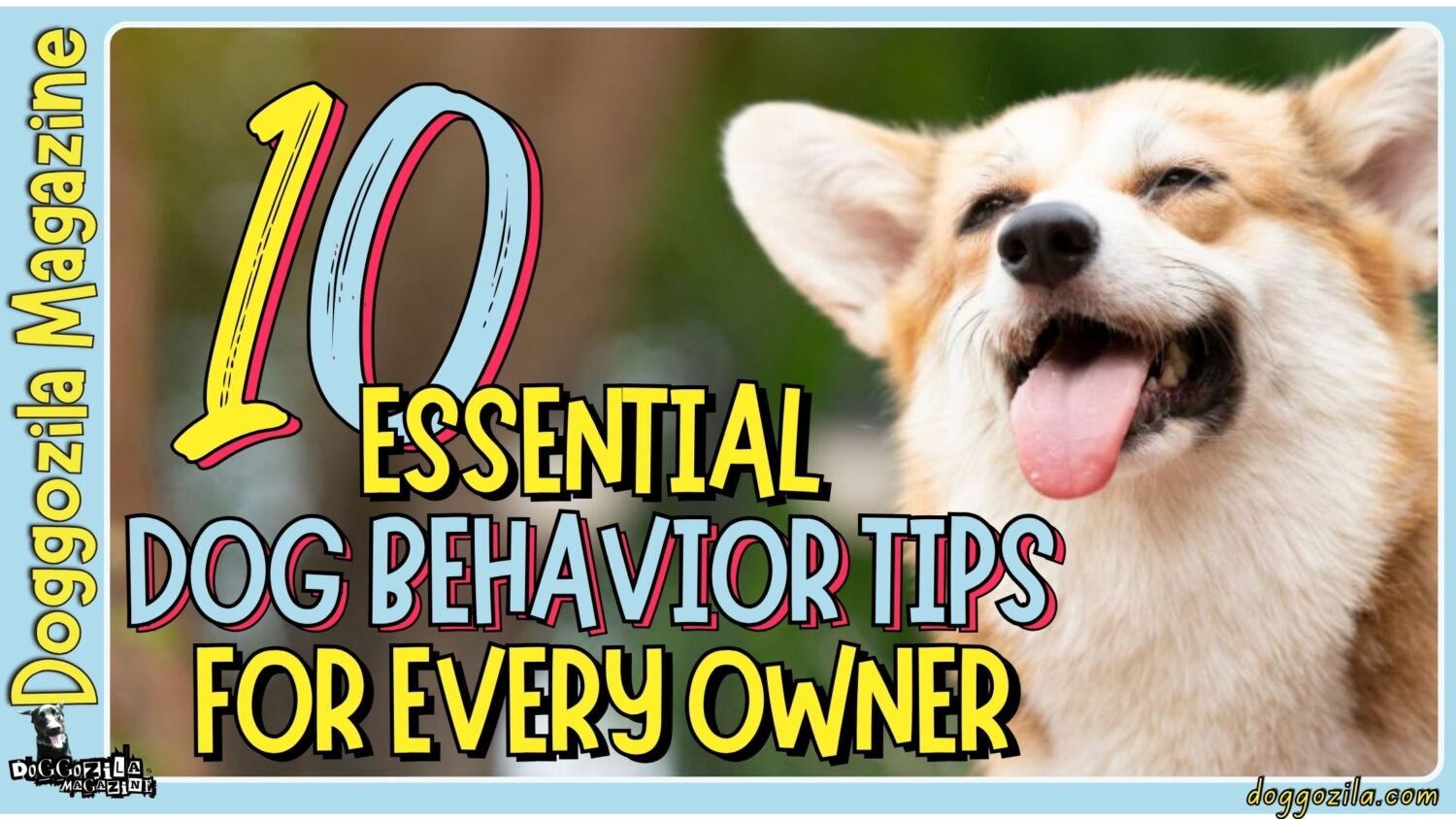Dogs are known for their diverse forms of communication, and two of the most common methods they use to express themselves are whining and barking. These vocalizations can convey a wide range of emotions, needs, and desires. Let’s explain how dogs communicate through whining and barking!

LEARN HOW DOGS CAN COMMUNICATE THROUGH WHINING AND BARKING
In this extensive guide, we’ll delve into the world of canine communication, exploring why dogs whine and bark, what these vocalizations mean, and how to interpret and respond to your furry friend’s attempts to talk to you. Dogs have a rich and complex language that includes body language, vocalizations, and even scent marking. Whining and barking are integral parts of their communication, allowing them to express their needs, emotions, and responses to the world around them.
Why Do Dogs Whine?
- Understanding the Whining Behavior: Dogs communicate with a high-pitched vocalization called whining. It is often associated with emotional states, desires, or discomfort.
Common Reasons for Whining:
- Seeking Attention: Dogs may whine to get your attention or express their desire to interact with you.
- Discomfort or Pain: Whining can signal that a dog is in physical discomfort or pain.
- Anxiety or Fear: Whining may result from anxiety, fear, or separation distress.
- Excitement: Dogs may whine when they are excited, such as when anticipating a walk or playtime.
- Hunger or Thirst: Whining can be a way to communicate their basic needs.
Why Do Dogs Bark?
- Interpreting Bark Types: Different barks convey various messages. For example, an alert bark differs from a play bark or a fearful bark. Pay attention to the tone, pitch, and duration of the barking.
Common Reasons for Barking:
- Alerting or Warning: Dogs may bark to alert you to a perceived threat or visitor.
- Expressing Excitement: Barking can be an expression of joy and anticipation.
- Territorial Behavior: Dogs often bark to establish or protect their territory.
- Communication: Barking can be a way for dogs to communicate with other dogs or with you.
- Boredom or Loneliness: Dogs may bark when they are bored or feeling isolated.

DECODING YOUR DOG’S VOCALIZATIONS
- Context Matters: Pay attention to the situation in which your dog is whining or barking. Note any specific triggers or patterns to help decipher their intent.
- Body Language Clues: Observe all demeanours and the body language of your dog. Tail position, ear orientation, and posture can provide valuable insights.
Responding to Dogs that Communicate Through Whining and Barking
- Meeting Their Needs: If your dog’s vocalization indicates a need, such as hunger or the need to go outside, address it promptly. Ensure that their physical and emotional needs are met.
- Training and Behavioral Considerations: Positive reinforcement training can help modify excessive or undesirable vocalizations. Consult with a professional dog trainer or behaviorist if needed.
- The Role of Breed and Individuality: Different dog breeds have unique vocalization tendencies. Recognize that individual dogs have their own personalities and communication styles.
- Common Misconceptions About Dog Vocalizations: Debunk common myths and misconceptions surrounding dog whining and barking. Understanding the truth about these vocalizations can strengthen your bond with your canine companion.
Strengthening the Human-Canine Bond Through Understanding
Dogs communicate through whining and barking as a way to express their emotions, needs, and reactions to their environment. By understanding and responding to these vocalizations, you can foster a stronger bond with your canine friend and ensure their well-being.
Remember that each dog is unique, and it may take time and patience to fully understand their language. Through attentive observation and compassionate responses, you can enhance your ability to communicate effectively with your furry companion.
Deciphering Barks, Whines, and Growls
Dogs have a rich and complex system of communication that goes beyond barks and whines. Understanding what your dog is trying to convey through their vocalizations is crucial for building a strong bond and ensuring their well-being. Let’s delve into the world of dog vocalizations, exploring the meaning behind different sounds and how to interpret and respond to your furry friend’s attempts to communicate.
The Language of Dogs
Dogs have a rich and varied system of communication that involves body language, scent marking, and vocalizations. Barking, whining, and growling are key components of this language.
Understanding the Types of Dog Vocalizations
- Barking: The most common form of dog vocalization is barking. It serves various purposes, from alerting to expressing excitement or anxiety.
- Whining: Whining is a high-pitched vocalization often associated with discomfort, anxiety, or excitement. It can also be a way for dogs to get attention.
- Growling: Growling is a deep and threatening sound. It can indicate both playfulness and aggression, depending on the context.

THE MEANING BEHIND DOG BARKS
- Different Types of Barks: Alert barks are used to signal a perceived threat or intruder. Playful barks indicate excitement and the desire for play. Fearful barks express anxiety or distress.
- Interpreting Context: Understanding why your dog is barking involves considering the situation and the accompanying body language. A barking dog with a wagging tail is likely excited, while one with a stiff posture may be signaling aggression or fear.
Deciphering Whines and Whimpers
- Emotional Whining: Whining and whimpering often indicate emotional states. It can be a sign of happiness, excitement, or anxiety
- Physical Discomfort: When in pain and discomfort dogs may whine. Identifying the source of their distress is essential for proper care.
Understanding Dog Growls
- Protective Growling: Dogs may growl when they feel the need to protect their territory or loved ones. This can be a warning sign and should be approached with caution.
- Playful Growling: Growling during play is typically not aggressive. It is a way for dogs to express excitement and enjoyment.
Body Language Clues About How Dogs Communicate Through Whining and Barking
- Tail Position: A wagging tail can indicate excitement or happiness, but the position of the tail is crucial. A tucked tail may signal fear, while a stiffly raised tail can indicate alertness.
- Ear Orientation: The orientation of the ears can reveal a lot about your dog’s emotions. Ears held forward can indicate curiosity, while flattened ears may signal fear or aggression.

COMMON MISCONCEPTIONS ABOUT HOW DOGS COMMUNICATE THROUGH WHINING AND BARKING
Debunk common myths and misconceptions surrounding dog vocalizations. Understanding the truth about these vocalizations can strengthen your bond with your canine companion.
Responding to Your Dog’s Vocalizations
- Addressing Needs: If your dog’s vocalizations indicate a need, such as hunger or the need to go outside, address it promptly. Make sure your dog’s physical and emotional necessities are met.
- Training and Behavior Modification: Positive reinforcement training can help modify excessive or undesirable vocalizations. If needed talk with a professional dog trainer or veterinarian.
A Quick Summary about How dogs communicate through whining and barking
Understanding the meaning of dog vocalizations is a crucial aspect of responsible pet ownership. By recognizing and responding to your dog’s vocal cues, you can strengthen your bond and ensure their well-being. Remember that each dog is unique, and it may take time and patience to fully understand their language.
Through attentive observation and compassionate responses, you can enhance your ability to communicate effectively with your furry companion. We hope learn why dogs communicate through whining and barking.
Learn how dogs are talking to humans with words using sound buttons!
Check the blue water dog if you want to get something for your furry friend!









